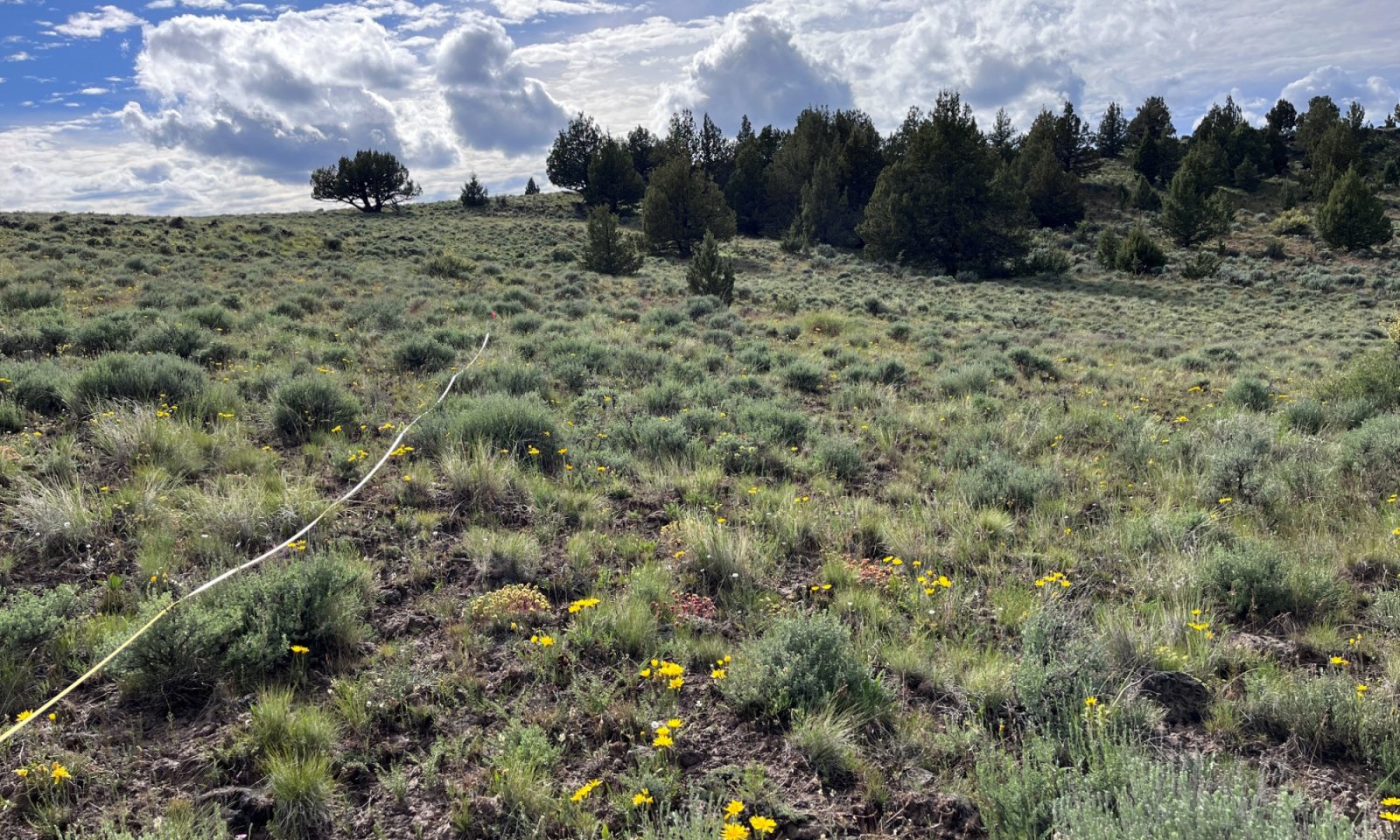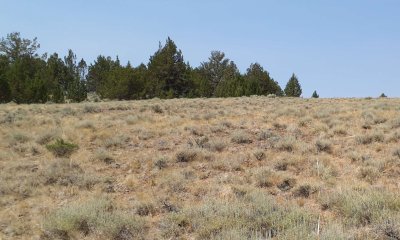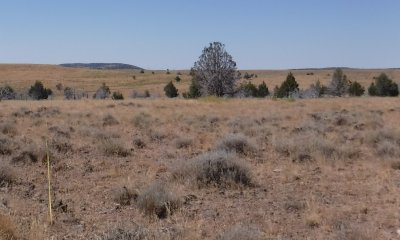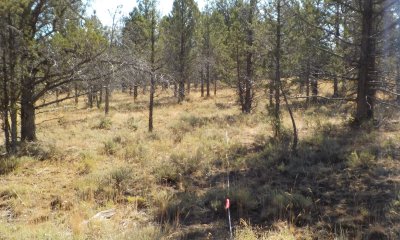
Blue Mountain Foothills, Claypan 12-16 PZ
Scenario model
Current ecosystem state
Select a state
Management practices/drivers
Select a transition or restoration pathway
-
Transition T1A
Introduction of non-native species; long-term overutilization by livestock.
More details -
Transition T2A
Inappropriate grazing management
More details -
Transition T2B
Time
More details -
Transition T2C
Fire, soil disruption, inappropriate grazing management
More details -
Transition T3B
Time
More details -
Transition T3A
Catastrophic fire, multiple fires, and/or soil disturbing treatments, Inappropriate grazing management
More details -
Restoration pathway R4A
Tree thinning; seeding
More details -
Restoration pathway R4B
Mechanical tree thinning; seeding (failed)
More details -
Transition T4A
Failed mechanical treatment, catastrophic fire
More details -
Restoration pathway R5A
Annual grass treatment; reseeding
More details -
No transition or restoration pathway between the selected states has been described
Target ecosystem state
Select a state
Description
The Reference state is representative of the natural range of variability under pristine condition. While occurrence is rare, this is not considered a "Historical" reference since for this ecological site, examples of these conditions may still occur on the landscape. No introduced species occur and repeated disturbance has not fundamentally altered soil quality or plant community composition. The reference state has two general plant communities; a grass-shrub dominant community, a shrub-grass dominant community and a shallow-rooted grass dominant community (considered the at-risk community). State dynamics are maintained by interactions between climatic patterns and disturbance regimes. Negative feedbacks enhance ecosystem resilience and contribute to the stability of the state. These include the presence of all structural and functional groups, low fine fuel loads, and retention of organic matter and nutrients. Plant community changes are primarily driven by fire, time and periodic drought.
Characteristics and indicators
• Lack of introduced plant species
• Presence of all functional and structural groups
• High plant vigor and reproductive capacity in most years
• Lack of widespread soil erosion
Resilience management
Reference sites should be prioritized in landscape health strategies wherever possible. Management should focus on land conservation and protection of these rare conditions above other uses. Surrounding landscapes should be carefully managed to prevent species introductions and other impacts on reference sites. See the "Defend the Core" strategy for additional information (Maestas et al. 2021).
Submodel
Description
This state is similar to the reference state yet some amount of introduced species occur and species composition or soil quality has been altered by long-term overutilization by livestock. Ecological function is largely intact, however the resiliency of the state has been reduced. This state has two general communities; a grass-shrub dominant community, a shrub-grass dominant community and a shallow-rooted grass dominant community (considered an at risk-community). Introduced species may increase in abundance but will not become dominant within this State. Negative feedbacks enhance ecosystem resilience and contribute to the stability of the state. These feedbacks include the presence of all structural and functional groups, low fine fuel loads, and retention of organic matter and nutrients.
Characteristics and indicators
• Low cover of introduced plant species (less than twice as much as deep rooted perennial bunchgrass cover)
• Deep rooted perennial grasses typically greater than 10% cover
• Presence of most or all functional and structural groups
• High plant vigor and reproductive capacity in most years
• Lack of widespread soil erosion
Resilience management
Current potential sites in high condition should be prioritized in landscape health strategies wherever possible. Management should focus on protection, minimization of disturbance, and early detection and treatment of plant invasions. Plant community management should focus on preserving deep-rooted perennial bunchgrasses in particular. Surrounding landscapes should be carefully managed to prevent impacts to these sites. See the "Defend the Core" strategy for additional information (Maestas et al. 2021).
Submodel
Description
This state is a product of many years of heavy grazing during growth periods of cool season, perennial bunchgrasses. Much of the deep-rooted perennial bunchgrass component has been lost and cover rarely exceeds 5 to 7 percent. Erosion and compaction of the surface soil horizon may have occurred and may be ongoing. Sandberg bluegrass will increase with a reduction in deep-rooted perennial bunchgrass competition and become the dominant grass. This state consists of two plant communities, a shallow-rooted bunchgrass dominant community and a little sagebrush, shallow-rooted bunchgrass community. Introduced species cover is typically higher than in the current potential state. The shrub overstory and bluegrass understory dominate site resources such that soil water, nutrient capture, nutrient cycling and soil organic matter are temporally and spatially redistributed.
Characteristics and indicators
• Low cover and production of deep-rooted perennial bunchgrasses (typically less than 7 percent cover)
• Moderate to high cover of shallow-rooted perennial bunchgrasses
• Variable cover of little sagebrush
• Evidence of soil erosion and/or compaction
Resilience management
Management should focus on preserving and reintroducing deep-rooted perennial bunchgrasses and treating introduced annual species to prevent a transition to an annual state.
Submodel
Description
In this state the site has crossed a threshold and is dominated by western juniper. Low sagebrush and perennial bunchgrasses may still be present, but they are no longer controlling site resources. As juniper cover increases, shrub cover typically decreases, therefore this site is characterized by two communities, a western juniper/shrub community and a western juniper dominated community. Soil moisture, soil nutrients and soil organic matter distribution and cycling have been spatially and temporally altered. Soil erosion may accelerate as perennial herbaceous cover decreases.
Characteristics and indicators
• Western juniper canopy cover 10 to 25 percent (or greater) (see Miller et al. 2007 for additional context)
• Deep-rooted perennial bunchgrasses and little sagebrush decreased
• Evidence of soil erosion common
Resilience management
Management should focus on preserving and reintroducing deep-rooted perennial bunchgrasses and treating western juniper to prevent further loss of other plant functional groups. Communities at earlier stages of invasion will have the highest likelihood of restoration success (See Miller et al. 2007). Special care should be taken to avoid removal of old growth western juniper.
Submodel
Description
In this state, the site has crossed a threshold into a state dominated by introduced annual species, especially invasive annual grasses. Invasive annual grasses become increasingly dominant though time by altering nutrient cycling, litter creation, and soil moisture capture thereby promoting positive feedbacks. An increase in fire frequency may also occur due to higher fine fuel loads that become flammable earlier in the season. Shrub and tree cover is variable. Shallow-rooted perennial grasses are common but are no longer controlling site resources.
Characteristics and indicators
• Annual grass cover typically greater than 25%
• Deep-rooted perennial grass cover typically less than 5%
• Annual grass cover greater than twice as much as deep-rooted perennial grass cover
• Little sagebrush cover may be very low
• Herbaceous litter cover may be abnormally high, especially in summer
Resilience management
Focus management actions on reducing invasive annual grass cover and spread to adjacent sites.
Submodel
Mechanism
Introduction of non-native species; long-term overutilization by livestock.
Context dependence
Ecological drought may increase the likelihood of this transition
Mechanism
Inappropriate grazing management, especially repeated growing season over utilization, will reduce deep-rooted perennial grasses and lead to soil compaction and eventually erosion
Context dependence
Soil is particularly vulnerable to compaction during late winter and spring when it is moist or saturated but unfrozen; this transition is most likely to occur from the 2.3 at-risk phase.
Mechanism
Time and lack of fire allows for maturation of the tree community
Context dependence
Years with above average precipitation may accelerate establishment and growth of western juniper (Miller et al. 2019); adjacent seed sources will also increase juniper establishment rates.
Mechanism
Catastrophic fire, multiple fires, soil disturbing treatments, inappropriate grazing management
Context dependence
Transition rate and probability will depend on existing cover, reproductive vigor and seedbank density of invasive annual species; higher than normal spring precipitation may interact with these disturbances to further favor increases in annual plant composition; this transition may be more likely to occur from the 2.3 at-risk phase.
Mechanism
Time and lack of fire allows for maturation of the tree community
Context dependence
Years with above average precipitation may accelerate establishment and growth of western juniper (Miller et al. 2019); adjacent seed sources will also increase juniper establishment rates.
Mechanism
Catastrophic fire, multiple fires, soil disturbing treatments, inappropriate grazing management
Context dependence
Transition rate and probability will depend on existing cover, reproductive vigor and seedbank density of invasive annual species; higher than normal spring precipitation may interact with these disturbances to further favor increases in annual plant composition
Mechanism
Thinning of trees, potentially coupled with seeding of desired species if required. Use of fire should be restricted to sites without little sagebrush and very low cover of annual species.
Context dependence
If most functional groups are still present, community 4.1 may be potentially restored to State 2; if most functional groups have been diminished or soil loss has occurred, 4.2 is likely to restore to State 3. Hand thinning may help decrease soil disruption while mechanical thinning may increase compaction; seeding success is low on this site and will depend in part on existing exotic grass pressure.
Mechanism
Ground disturbing mechanical tree thinning treatment; potentially coupled with a failed seeding. Use of fire should be restricted to sites without little sagebrush and very low cover of annual species.
Context dependence
If most functional groups are still present, community 4.1 may be potentially restored to State 2; if most functional groups have been diminished or soil loss has occurred, 4.2 is likely to restore to State 3. Hand thinning may help decrease soil disruption while mechanical thinning may compact soils and increase the likelihood of a transition to State 3; seeding success is low on this site and will depend in part on existing exotic grass pressure.
Mechanism
Ground disturbing mechanical treatment, catastrophic fire
Context dependence
Transition rate and probability will depend on existing cover, reproductive vigor and seedbank density of invasive annual species
Mechanism
Treatment of annual grasses, likely requiring herbicide application; coupled with seeding of desired native species
Context dependence
Above average growing season precipitation may increase establishment success; restoration success will be much more likely from community 5.1 than 5.2 given a greater composition of functional groups
Model keys
Briefcase
Add ecological sites and Major Land Resource Areas to your briefcase by clicking on the briefcase (![]() ) icon wherever it occurs. Drag and drop items to reorder. Cookies are used to store briefcase items between browsing sessions. Because of this, the number of items that can be added to your briefcase is limited, and briefcase items added on one device and browser cannot be accessed from another device or browser. Users who do not wish to place cookies on their devices should not use the briefcase tool. Briefcase cookies serve no other purpose than described here and are deleted whenever browsing history is cleared.
) icon wherever it occurs. Drag and drop items to reorder. Cookies are used to store briefcase items between browsing sessions. Because of this, the number of items that can be added to your briefcase is limited, and briefcase items added on one device and browser cannot be accessed from another device or browser. Users who do not wish to place cookies on their devices should not use the briefcase tool. Briefcase cookies serve no other purpose than described here and are deleted whenever browsing history is cleared.
Ecological sites
Major Land Resource Areas
The Ecosystem Dynamics Interpretive Tool is an information system framework developed by the USDA-ARS Jornada Experimental Range, USDA Natural Resources Conservation Service, and New Mexico State University.








